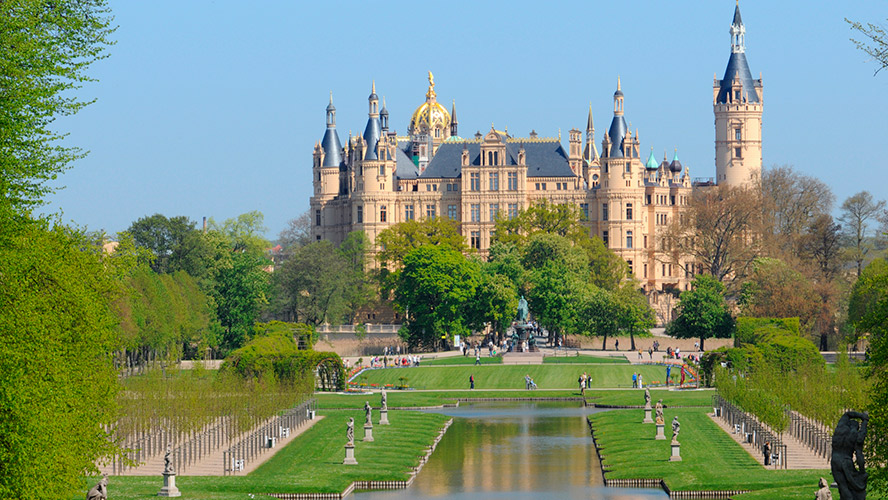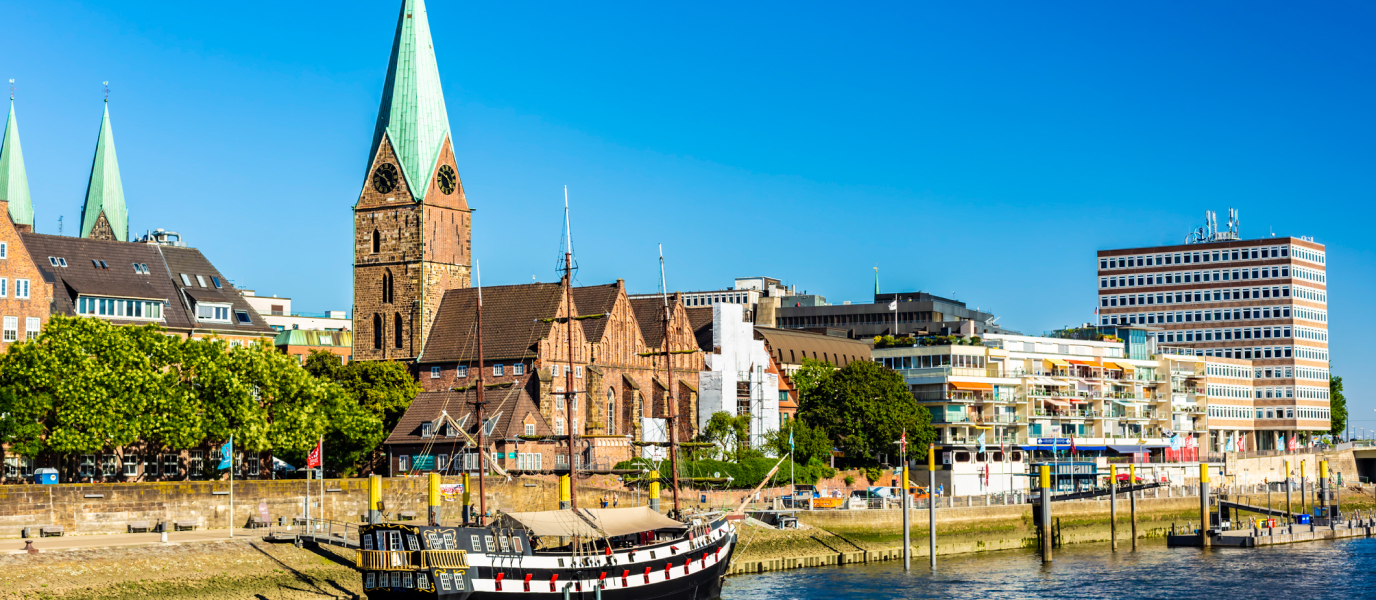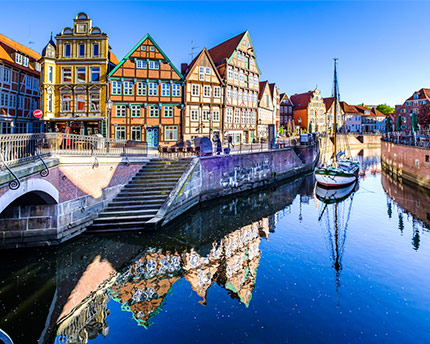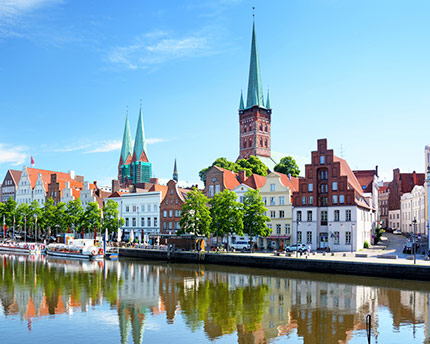Hamburg is known as the “Venice of the North” and has plenty for visitors to see, including the historic Rathausmarkt [Town Hall Square], the famous Speicherstadt (the largest port warehouse complex in the world and a UNESCO World Heritage Site), the ultra-modern Elbphilharmonie concert hall, the bustling Fischmarkt [fish market] and the Reeperbahn, the city’s night-life district, among many other attractions.
But that’s not all. Hamburg is also an excellent departure point for exploring the surrounding area and enjoying all kinds of experiences. These include fascinating activities for fans of culture, nature and heritage: northern Germany has endless options for great days out.
Stade: an old Hanseatic town
Stade is around 45 km from Hamburg if you follow the left bank of the Elba towards its estuary and was founded at the end of the 8th century. Today, it has one of the most beautiful historic centres in northern Germany, and it still gives you a sense of Stade’s enduring importance as a trade port and member of the powerful Hanseatic League.
Medieval St Cosmae et Damiani Lutheran Church (13th-17th century), Wilhadi Lutheran Church (14th century), the old Hanseatic port, the Fischmarkt [fish market square], the old Town Hall building (17th century Baroque), the typical red brick and timber wineries, the historic Schwedenspeicher [Swedish warehouse], the monastery and Johanniskloster [St John’s Monastery]… Strolling around Stade is like travelling back in time to a tale of northern Europe folklore – and the themed guided tours around the town are fantastic.
This remarkable historic town is in the fertile Altes Land region and is surrounded by fruit trees and vegetable gardens, making it a spectacular sight in spring. It’s a magical spot, perfect for walking and cycling, and just one of the many places to visit near Hamburg.
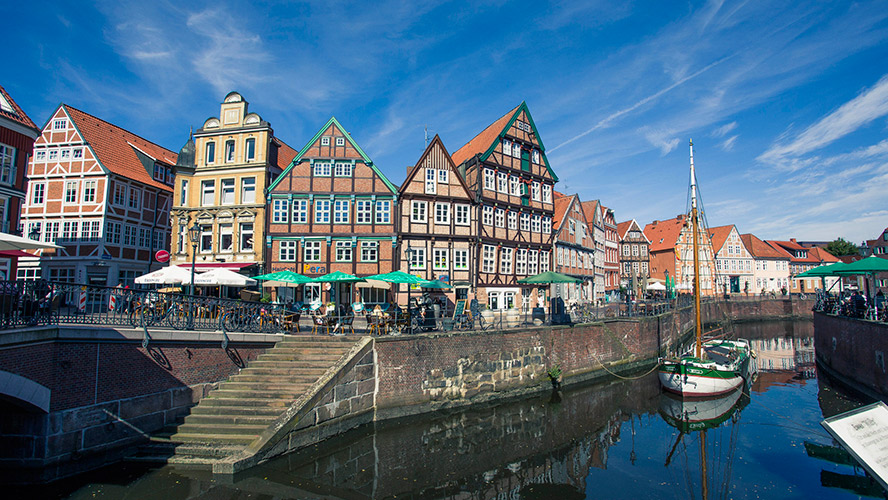
Buxtedhude: a fairy-tale village
Another historic gem with Hansa influences is the picturesque village of Buxtehude, just over 30 km from the centre of Hamburg and also in Altes Land. Founded at the end of the 12th century and firmly established at the beginning of the 14th century, Buxtedhude is in Low Saxony and is flanked by fertile alluvial fields on the left bank of the Elba. It was an important centre of trade during the Middle Ages.
Today, Buxtedhude still offers visitors wonderful sights that reveal its rich past. A good place to start is the Alstadt (the historic centre), which has typical timber-framed houses and cobbled streets. It’s dissected by the long, narrow Fleth canal, an old river dock where you can still hear the echoes of the village’s prosperous trading past. Just a few moments’ walk from the Fleth is the town’s biggest attraction: St Petri Kirche [St Peter’s Church]. This Protestant church has an impressive tower that soars 75 m above Buxtedhude old town.
Another feature of the town that makes it particularly special is its connection to German folklore. It was in Buxtehude that writer Wilhelm Shröder set his famous tale “The Hare and the Hedgehog”, later popularized by the Brothers Grimm. It’s no coincidence that the town is included on the German Fairy Tale Route, a cultural tourism route that includes around 500 cities that are linked to the best-loved tales of German fantasy literature, from Frankfurt to Buxtedhude.
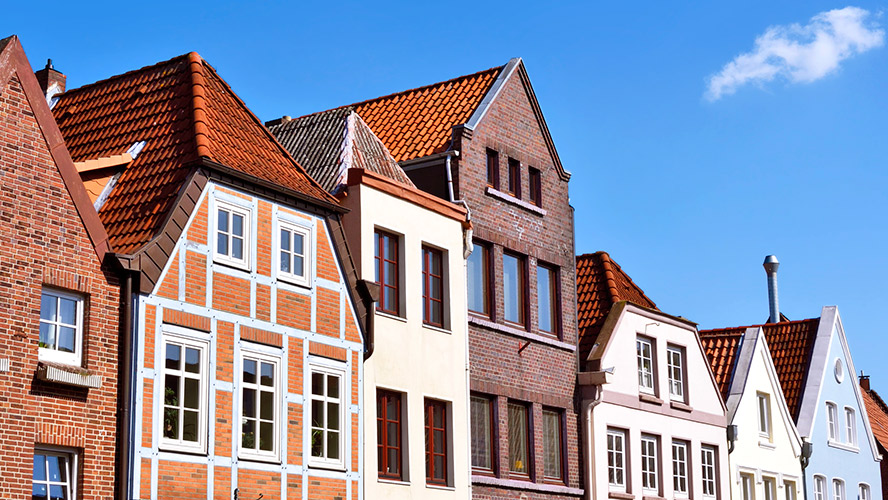
Lübeck: cradle and capital of the Hansa
The historic town of Lübeck is a UNESCO World Heritage Site and has a fascinating series of monuments that reveal over a thousand years of history. Founded in the middle of the 12th century on the coast of the Baltic Sea, around 70 km from Hamburg, Lübeck was the “Queen of the Hansa”, the cradle and capital of the powerful Hanseatic League that connected the main trading centres in much of northern Europe.
The historic centre of Lübeck is a medieval marvel and is embraced on each side by two branches of the Trave River. Walk through the impressive Holstentor, the city gate, and you’ll quickly spot typical red brick buildings built in the Baltic Gothic style, and the seven towers of the city’s five churches. The Town Hall, the old Salzspeicher [salt warehouse], the Buddenbrookhaus (former residence of the family of writer Thomas Mann), the various squares and narrow streets all give visitors a sense of the history and architecture of this charming town.
And don’t forget, if you’re visiting Lübeck, you simply have to try its famous marzipan, the city’s sweet speciality.
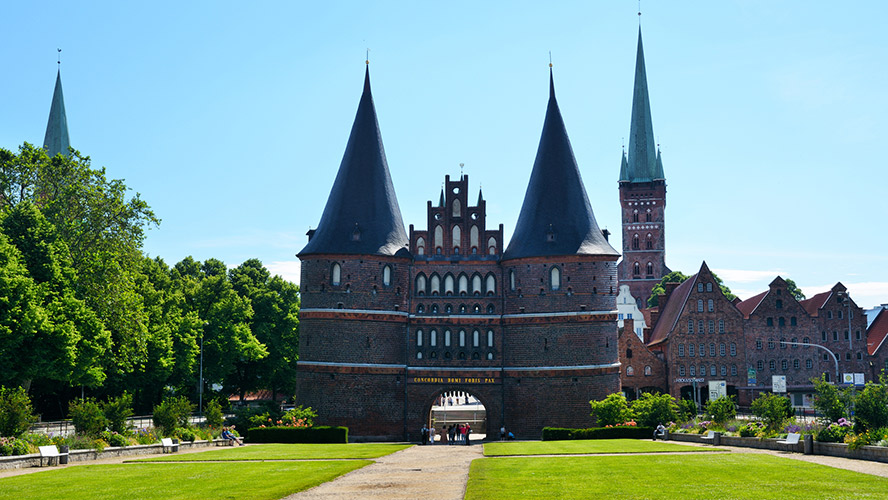
Bremen: tradition and modernity
Travel just over 100 km south-west of Hamburg and you come to the Free Hanseatic City of Bremen (one of Germany’s three Stadtstaaten (city-states)), a wonderful place to visit. Famous for its link to the popular Brothers Grimm tale “The Musicians of Bremen” (which you’ll spot everywhere), the city is truly kaleidoscopic because it successfully combines tradition and modernity.
As you walk the streets of Bremen, you’ll discover historic gems like Bremen Cathedral and the magnificent Markplatz [Market Square] area with the Town Hall and statue of Roland – both UNESCO World Heritage Sites. But you’ll also see highly innovative buildings such as the Universum Bremen, a futuristic science museum with over 4,000 m2 of interactive exhibits that are waiting to challenge your senses.
And for adventure-lovers, the nearly 150-km Hamburg to Bremen Cycling Route connects the two most famous Hanseatic cities in northern Germany. It takes you through small villages steeped in history and along old trade routes, B-roads and peaceful forest trails. It’s a fantastic experience!
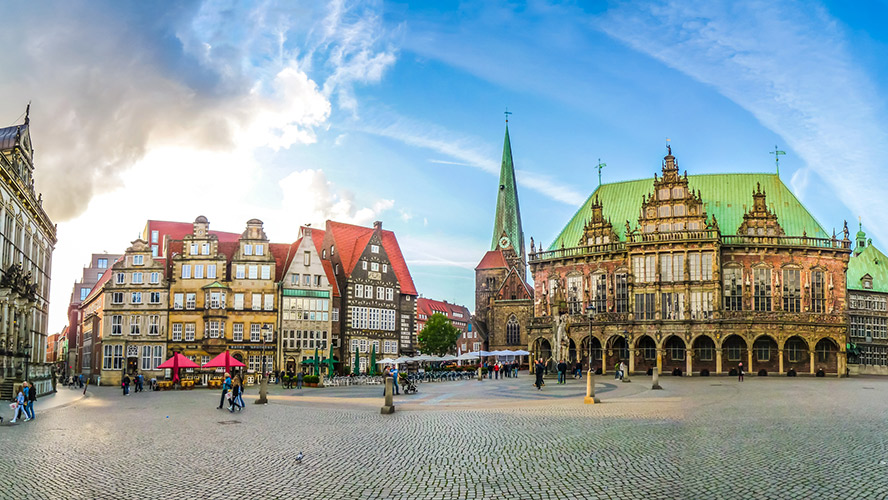
Luneburg: the “City of Salt”
The “City of Salt” is also southwards but slightly closer to Hamburg and it’s another chance to experience the medieval splendour of the region and its strong links to the Hanseatic League. For centuries, Luneburg’s “white gold” was one of the most important products to be traded in the region and was managed by the wealthy and powerful federation.
Just some of Luneburg’s treasures include its narrow streets and old mansions, the historic Town Hall building, three Gothic churches (St Michaelis, St Nicholai and St Johnnis) and the old Water Tower. The city was also fortunate to remain completely undamaged during the Second World War and as a result it retains an authentic medieval charm.
The Stintmarkt, the old market square and port on the banks of the Ilmenau River, where the salt boats were once loaded, is surrounded by old warehouses that have been converted into bars and restaurants and at dusk this area becomes the lively heart of the city. You might be surprised to know that Luneburg has the second highest density of bars per square metre and number of inhabitants in Europe, after Madrid.
Schwerin: one of Germany’s most beautiful castles
Schwerin is the capital of the Mecklenburg–Western Pomerania state and one of the most spectacular places to visit around Hamburg.
It’s just over 100 km east of Hamburg and its long history is linked to the dukes and grand dukes of Mecklemburg whose greatest legacy is impressive Schwerin Castle. Set on a small island on one of seven lakes that surround the city, this sumptuous ducal residence (today the seat of the regional parliament) is one of the most beautiful castles in Germany and is just over an hour from Hamburg.
As well as its wonderful castle, Schwerin also has a fascinating historic centre that is connected to this fairy-tale building by some idyllic gardens. The cathedral, Schwerin State Theatre, the Market Square, the old Town Hall and remarkable State Museum Schwerin are just some of the attractions waiting to be discovered in this north German city.
Where to eat in Hamburg
There’s nothing like a good meal after a long day out and Hamburg has masses of food options with something to suit every preference and budget.
If you’d like to sample haute cuisine, modern HafenCity has options such as Stricker’s Kehr Wieder Spitze, with impressive views of the Elbphilharmonie and port, and The Table (three Michelin stars) by famous chef Kevin Fehling. VLET in der Speicherstadt, in historic Speicherstadt, of course, is another great spot.
If you’d like to try more classic dishes, try the restaurants Deichgraf and Gaststätte Zum Brandanfang in popular Deichstraße. Or you could seek out the city’s most eclectic flavours in Portugiesenviertel [the Portuguese neighbourhood] or in St Pauli. If you head to Portugiesenviertel, you can enjoy wonderful fish at Caramba Especial and Olá Lisboa; and in St Pauli, next to the Landungsbrücken, there are great options such as the amazing fish sandwiches at Brücke 10 and typical German beer hall BLOCKBRÄU, among many others. Fischerhaus, behind the Fischmarkt, is a classic in this neighbourhood.
Another great idea is dining at Restaurante & Vinoteca 1700, in the hotel Barceló Hamburg . It serves fusion cuisine that perfectly blends Mediterranean and German flavours, all served with an excellent selection of fine wines.
Where to stay in Hamburg
Discovering Hamburg and its surroundings will be a trip full of remarkable experiences and the place you choose to stay in, relax and charge your batteries should be equally as good. So, look no further than the hotel Barceló Hamburg. This four-star hotel has an urban, cutting-edge style and 193 guest rooms that have everything you could need. It’s in the heart of the city making it perfect for both business and pleasure.





































































